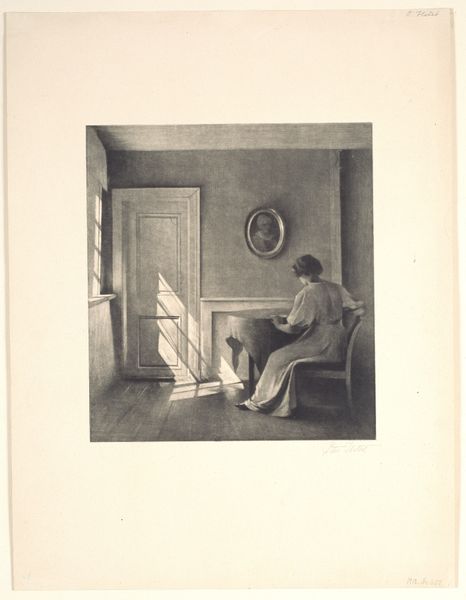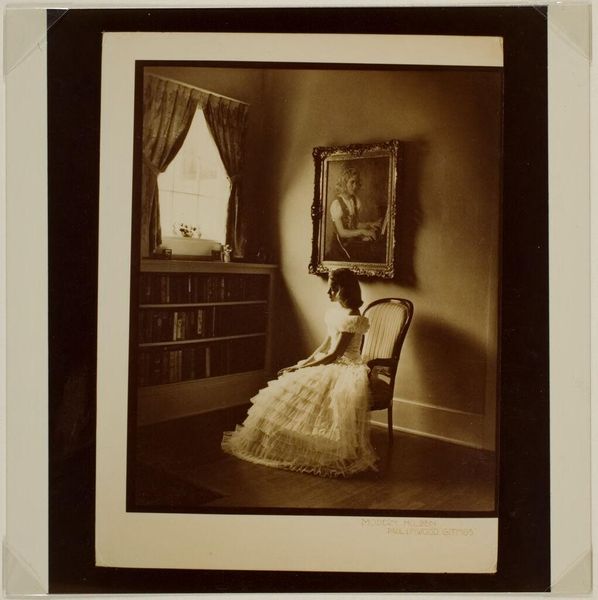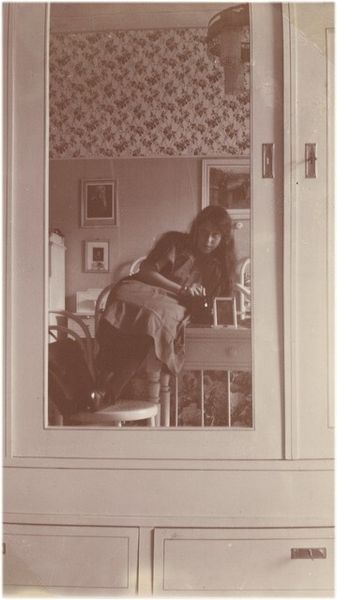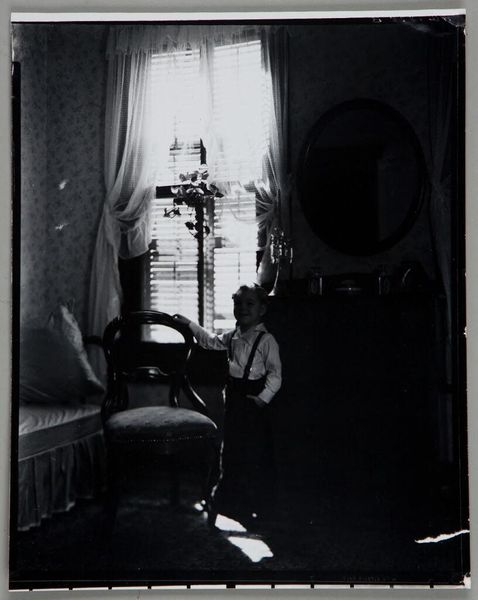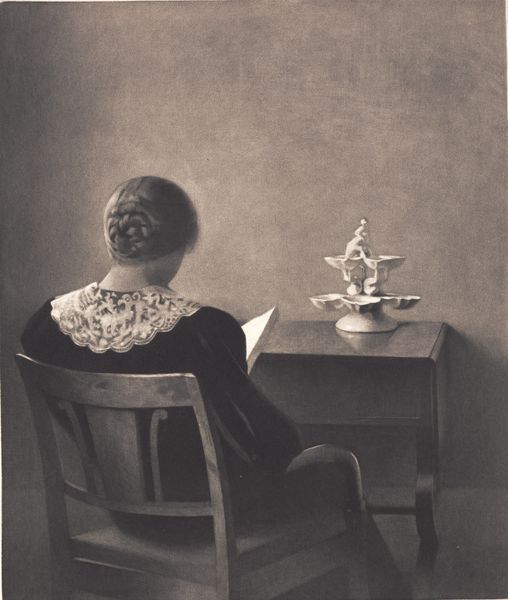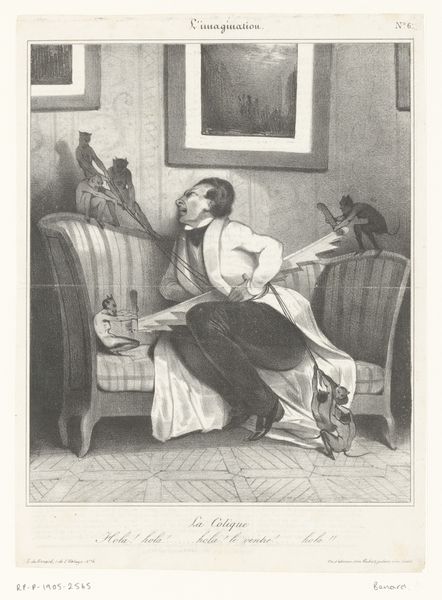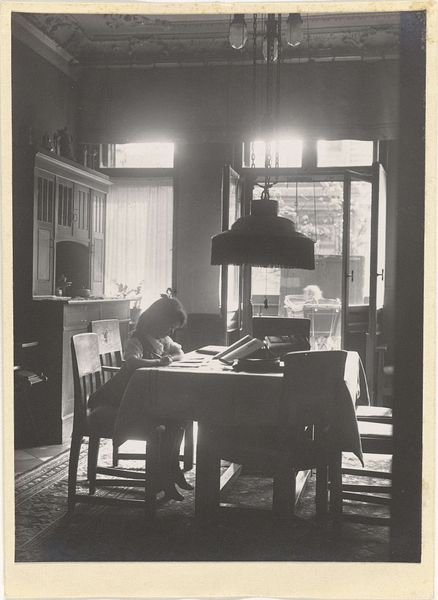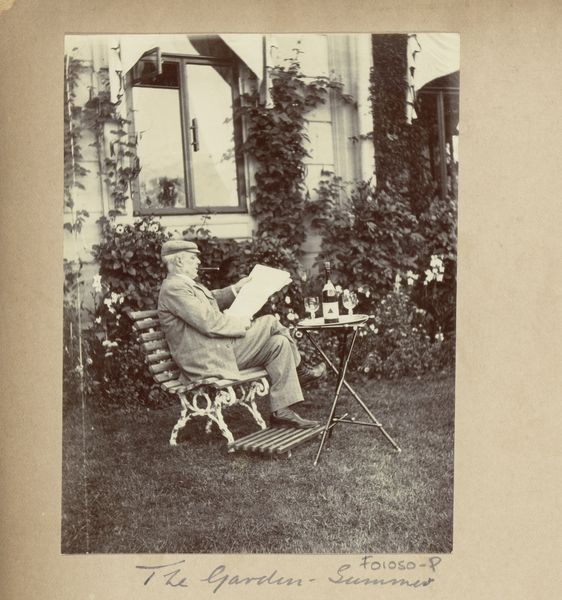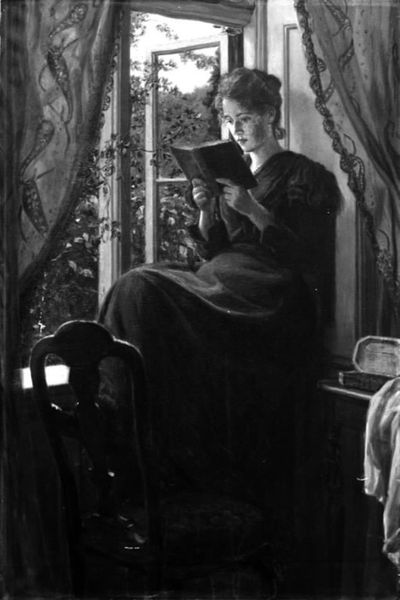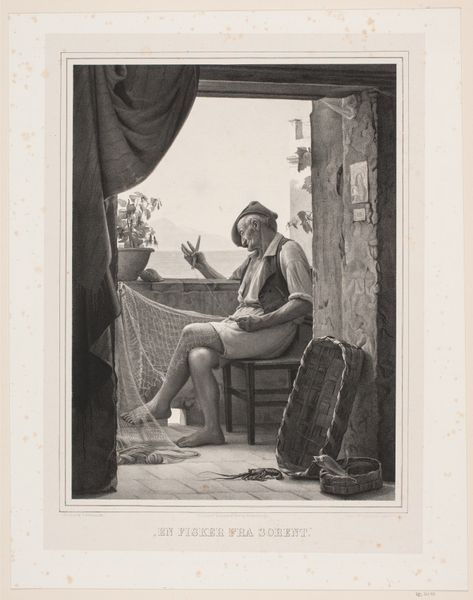
gelatin-silver-print, photography, gelatin-silver-print
#
portrait
#
gelatin-silver-print
#
photography
#
intimism
#
gelatin-silver-print
#
modernism
#
realism
Dimensions: 7 9/16 x 7 1/16 in. (19.21 x 17.94 cm) (image)12 1/16 x 11 3/8 in. (30.64 x 28.89 cm) (mount)
Copyright: No Known Copyright
Editor: Here we have J. Jerome Hill’s gelatin-silver print, "Maud Hill," dating between 1920 and 1972. It's a very intimate portrait, I feel a sense of quiet observation. What draws your attention when you look at this work? Curator: I see this piece as a commentary on the prescribed roles of women and aging during the period. Trapped, in a sense, between domesticity symbolized by the curtains and needlepoint, and the beckoning freedom of nature, visible through the window. It subtly critiques the limited sphere afforded to women of a certain class and age. What do you make of the window's positioning in relation to her gaze? Editor: That's fascinating! I hadn't thought of it as a critique, more as just a quiet moment. The window, I suppose, does frame her longing – almost like a stage. Do you think Hill intended this commentary or is it something we project onto the image now? Curator: Intent is always a slippery slope. However, we can look at the visual language - the light, the composition - as suggestive. The framing of Maud by the window *implies* a social critique, reflecting broader feminist conversations that have been ongoing. Do you feel this changes your initial perception of the image? Editor: It definitely adds another layer. Seeing her enclosed like that, yet with a window... it shifts the tone. It's not just peaceful observation; it's a quiet resistance, maybe? Curator: Precisely. By juxtaposing intimacy with the hint of external possibilities, Hill's photograph prompts us to consider the silent struggles within seemingly ordinary lives. Editor: I see the work so differently now! I’ll remember to look for those unspoken stories within the everyday when looking at portraits moving forward.
Comments
No comments
Be the first to comment and join the conversation on the ultimate creative platform.
